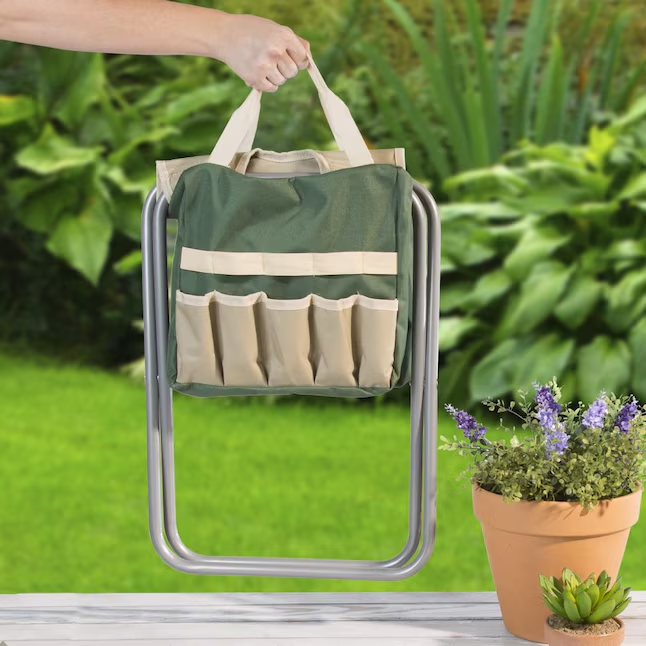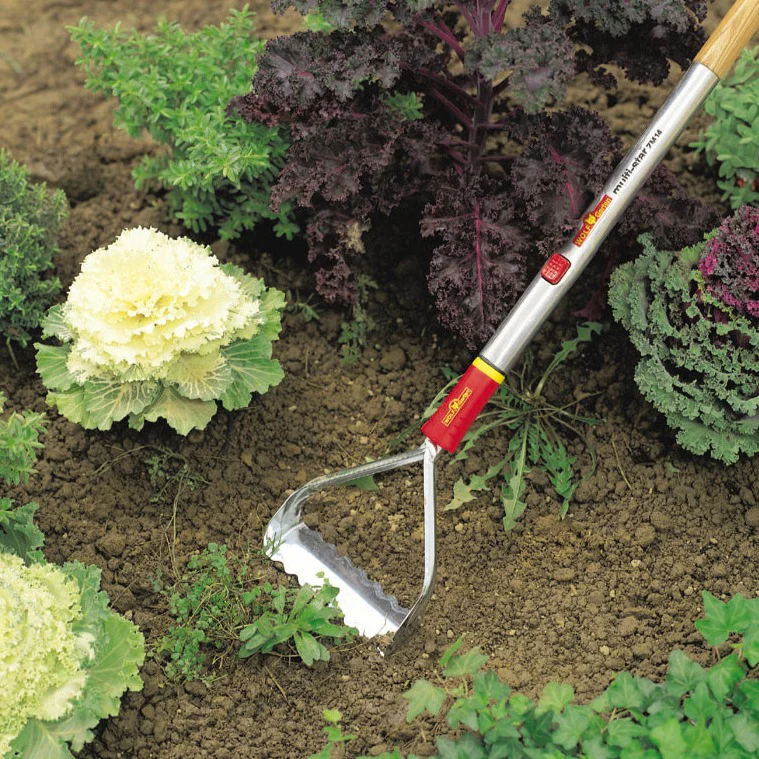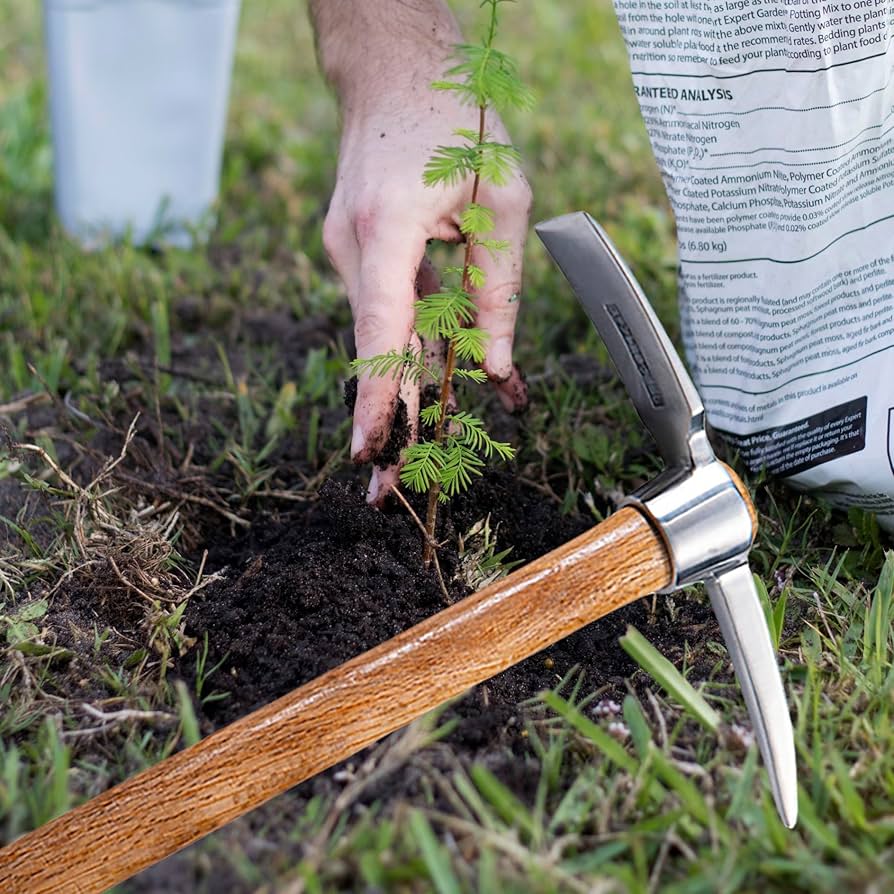
The Garden Pick: A Versatile Tool for Every Gardener’s Arsenal
Understanding the Garden Pick: An Essential Gardening Implement
The garden pick, also known as a mattock or grub hoe, stands as an indispensable tool in any gardener’s collection. This versatile implement combines the features of an axe and an adze, featuring a sturdy handle attached to a head with two opposing blades. One end typically sports a pointed pick for breaking up hard soil or rocks, while the other end houses a broader, flatter blade for chopping roots or digging. The garden pick’s design allows gardeners to tackle a wide range of tasks, from soil preparation to plant removal, making it a go-to tool for both novice and experienced horticulturists. Its ability to handle tough jobs with ease has cemented its place in gardens around the world, proving particularly useful in areas with challenging soil conditions or overgrown spaces in need of clearing.
The Evolution of the Garden Pick: From Ancient Times to Modern Day
The garden pick boasts a rich history dating back to ancient civilizations. Archaeological evidence suggests that early versions of this tool were used in agricultural practices as far back as 6,000 BCE. Over time, the design evolved to meet the changing needs of farmers and gardeners. Ancient Egyptians utilized pick-like tools for tilling the fertile soil along the Nile, while Roman soldiers carried similar implements for digging trenches and fortifications.
As agriculture and gardening practices advanced, so did the garden pick’s design. The Industrial Revolution brought about mass production techniques, leading to more standardized and affordable tools. Today’s garden picks benefit from modern materials and ergonomic designs, making them more durable and user-friendly than their historical counterparts. Despite technological advancements in gardening equipment, the basic form and function of the garden pick remain largely unchanged, testament to its enduring utility in cultivating the land.

Types of Garden Picks: Choosing the Right Tool for Your Needs
Garden picks come in various styles and sizes to suit different gardening tasks and user preferences. The classic pick mattock features a pointed pick on one side and a wide, flat blade on the other, ideal for general-purpose use. Cutter mattocks replace the pick end with a vertical axe blade, making them excellent for chopping roots and clearing brush. Pick axes, with their dual pointed ends, excel at breaking up extremely hard soil or rocks.
For lighter tasks, hand mattocks offer similar functionality in a more compact form. Some modern designs incorporate features like fiberglass handles for reduced weight or interchangeable heads for increased versatility. When selecting a garden pick, consider factors such as the type of soil in your garden, the tasks you’ll be performing, and your physical strength. A heavier tool may provide more power but can be tiring to use for extended periods. Conversely, a lighter pick might be easier to handle but may struggle with tougher jobs. Choosing the right type of garden pick ensures you have the most effective tool for your specific gardening needs.
Proper Techniques for Using a Garden Pick: Maximizing Efficiency and Safety
Mastering the proper techniques for using a garden pick enhances both efficiency and safety in the garden. Begin by adopting a stable stance with feet shoulder-width apart, ensuring a solid foundation. Grip the handle near the end with both hands, allowing for maximum leverage. When swinging the pick, use your entire body, not just your arms, to generate power. Lift the tool above your shoulder, then bring it down in a controlled arc, using gravity to assist the motion.
For breaking up soil, use the pointed end at a 45-degree angle to the ground. When chopping roots or vegetation, employ the broader blade end, swinging in a more vertical motion. Always be aware of your surroundings and the position of the pick’s head to avoid accidental injury. Take frequent breaks to prevent fatigue, which can lead to poor form and increased risk of injury. With practice, these techniques become second nature, allowing gardeners to tackle tough jobs with confidence and ease.
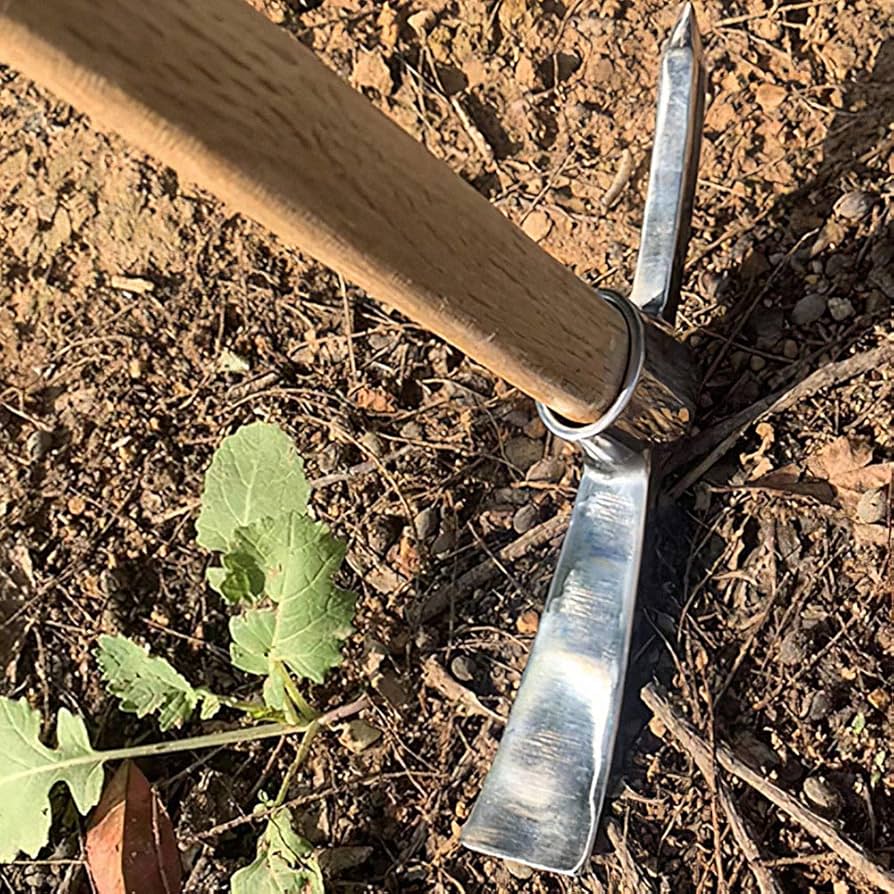
Maintaining Your Garden Pick: Ensuring Longevity and Performance
Proper maintenance of a garden pick extends its lifespan and ensures optimal performance. After each use, clean the tool thoroughly to remove dirt and debris. Use a wire brush to scrub off caked-on soil, paying special attention to the joints between the head and handle. Rinse the pick with water and dry it completely to prevent rust. Regularly inspect the handle for cracks or splinters, replacing it if necessary to maintain safety.
Keep the metal parts lightly oiled to prevent rust and ensure smooth operation. For wooden handles, apply linseed oil periodically to prevent drying and cracking. Sharpen the blades as needed using a file or grindstone, maintaining the original angle of the edge. A sharp blade not only makes work easier but also reduces strain on the user. Store the garden pick in a dry place, preferably hanging to prevent moisture accumulation. By following these maintenance practices, gardeners can ensure their pick remains a reliable tool for years to come.
The Garden Pick in Soil Preparation: Breaking New Ground
The garden pick excels in soil preparation tasks, particularly when breaking new ground or working with challenging soil conditions. Its pointed end proves invaluable for breaking up compacted soil, allowing air and water to penetrate deeper into the earth. This aeration process improves soil structure and promotes healthier root growth for plants. When encountering rocks or large clumps of soil, the pick’s weight and leverage make short work of these obstacles, allowing gardeners to create a more uniform planting bed.
The broader blade end can be used to create furrows for planting or to mix in amendments like compost or fertilizer. For establishing new garden beds in grassy areas, the pick can be used to remove the top layer of sod efficiently. In areas with clay soil, the garden pick’s ability to break through the hard surface layer is particularly beneficial, helping to improve drainage and prevent waterlogging. By thoroughly preparing the soil with a garden pick, gardeners lay the foundation for a thriving and productive garden.
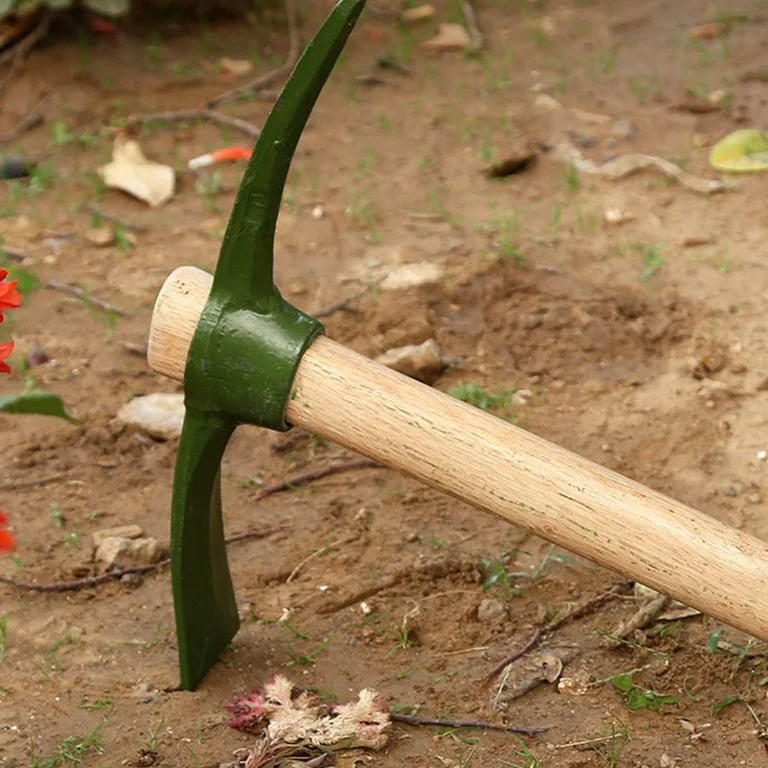
Clearing and Reclaiming Overgrown Areas with a Garden Pick
When faced with overgrown or neglected garden areas, the garden pick proves an invaluable ally in reclamation efforts. Its robust construction and versatile design make it ideal for tackling dense vegetation and stubborn roots. The axe-like blade efficiently chops through thick undergrowth, while the pick end can pry out deeply embedded roots.
For removing small stumps or large weeds, the combination of chopping and leveraging actions quickly dislodges even the most tenacious plants. In areas where invasive species have taken hold, the garden pick allows gardeners to dig out the entire root system, reducing the likelihood of regrowth. When clearing land for new garden beds or pathways, the pick can break up the soil surface, making it easier to remove unwanted vegetation and prepare the area for new plantings. This versatility makes the garden pick an essential tool for gardeners looking to transform neglected spaces into vibrant, cultivated areas.
The Garden Pick in Hardscaping Projects: Beyond Plant Cultivation
While primarily associated with soil work, the garden pick also plays a crucial role in hardscaping projects. Its ability to break up compacted soil and rocks makes it invaluable when preparing ground for patios, walkways, or retaining walls. The pointed end can create pilot holes for posts or stakes, while the broader blade helps level and shape the ground. When installing irrigation systems, the pick efficiently digs trenches for pipes, navigating around existing root systems with precision.
For creating drainage solutions, the garden pick can carve shallow ditches or swales to direct water flow. In rock gardens, it aids in positioning and securing large stones, allowing gardeners to achieve a natural, settled look. The tool’s versatility extends to tasks like digging holes for fence posts or preparing sites for outdoor structures. By incorporating the garden pick into hardscaping projects, gardeners can seamlessly blend the organic elements of their garden with structural features, creating cohesive and functional outdoor spaces.
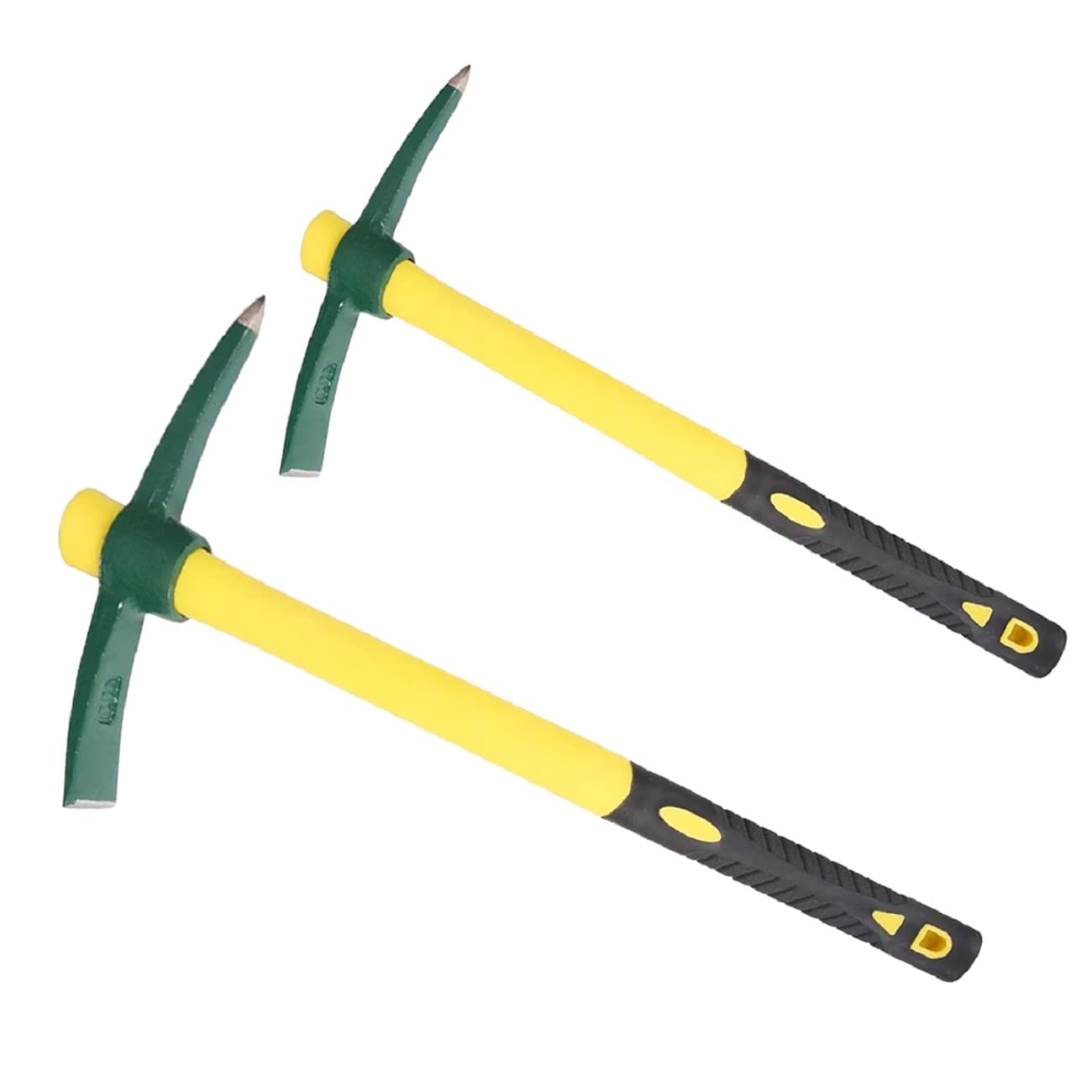
Ergonomics and Safety: Choosing and Using a Garden Pick for Comfort and Protection
Ergonomics plays a crucial role in the design and use of garden picks, impacting both comfort and safety. Modern picks often feature ergonomic handles with non-slip grips to reduce hand fatigue and improve control. The length of the handle should allow users to work without excessive bending, reducing strain on the back. Some manufacturers offer picks with adjustable handle lengths to accommodate users of different heights.
When using a garden pick, proper body mechanics are essential to prevent injury. Users should bend at the knees rather than the waist, using leg muscles to power the tool rather than relying solely on upper body strength. Wearing appropriate safety gear, including sturdy shoes, gloves, and eye protection, further enhances user safety. For those with physical limitations, lighter weight picks or those with shock-absorbing features can make gardening tasks more manageable. By prioritizing ergonomics and safety in both tool selection and use, gardeners can enjoy the benefits of the garden pick while minimizing the risk of discomfort or injury.
The Future of Garden Picks: Innovations and Sustainable Practices
As gardening practices evolve, so too does the design of garden picks. Manufacturers are exploring innovative materials like carbon fiber for handles, offering the strength of traditional wood with reduced weight. Some companies are developing modular systems where different heads can be attached to a single handle, increasing versatility while reducing the need for multiple tools. Ergonomic innovations continue to improve user comfort, with features like vibration-dampening technologies being incorporated into high-end models.
In line with growing environmental concerns, there’s a trend towards using sustainable materials in tool production, such as recycled metals for heads and responsibly sourced wood for handles. Some gardeners are reviving interest in traditional, handcrafted picks, valuing their durability and connection to gardening heritage. As urban gardening and small-space cultivation gain popularity, compact and multi-functional pick designs are emerging to meet these new needs. Despite these innovations, the core functionality of the garden pick remains unchanged, underscoring its timeless utility in the world of gardening.
